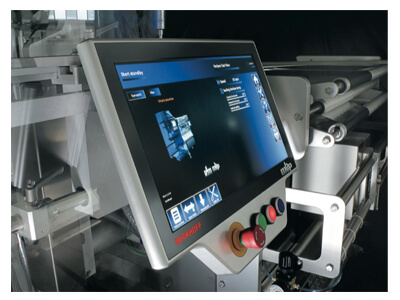There are now many different form factors for PCs other than desktops and notebooks. For example, the standard desktop PC is not always well suited for harsh lab or industrial environments, because of factors such as heat, shock, dust, electrical noise, and vibration. Since more and more PCs are finding their way onto factory floors and similar environments, many manufacturers produce industrial (sometimes called "ruggedized") PCs for this market. In addition, PCs in the form of single-board computers (SBCs) are now commonly embedded within commercial equipment. These embedded PCs are usually a small card with all or most of the features of a standard desktop PC's system unit. PC/104 is the most common standard for small, embedded pc.
Industrial PCs
Industrial PCs are very similar to their desktop counterparts. The main differences are the components and enclosures used by the different PCs. Some industrial PCs use a standard motherboard with expansion slots in a heavy-duty case while most others use a passive backplane. A passive backplane is the backbone of a number of computer bus systems (such as VME and STD BUS) as well as many mainframe computers and early microcomputers (such as the S-100 bus). It is simply an array of connectors, wired together to form a bus, without any active circuitry present. The CPU is on a card, plugged into the bus, just like any other expansion board (such as memory or I/O). This adds extreme flexibility to the system, because upgrading to another processor simply involves switching the CPU card. It also guarantees that all signals required by the CPU are present on the passive backplane, adding flexibility for multiprocessors.
 Most of these passive backplane systems (based on PCI, ISA, or both) have more expansion slots than standard desktop PCs. The major penalty for the passive backplane approach is added cost. These PCs are usually more expensive than standard desktop PCs because of their larger mechanical size, the greater number of components, larger power supplies, and overall higher component costs. Their biggest advantage is much greater expandability than a standard PC.
Most of these passive backplane systems (based on PCI, ISA, or both) have more expansion slots than standard desktop PCs. The major penalty for the passive backplane approach is added cost. These PCs are usually more expensive than standard desktop PCs because of their larger mechanical size, the greater number of components, larger power supplies, and overall higher component costs. Their biggest advantage is much greater expandability than a standard PC.
Industrial PCs tend to use different form factors. Some basic systems are packed into boxes smaller than a diskette drive while others use large card cages for 19-inch rack mounting. The basic systems all have several expansion slots, whether via a motherboard or a passive backplane. The larger systems have an oversized power supply, a cooling fan with a dust filter, superior electromagnetic shielding (which may be poor in some desktop PCs), and often shock-mounting for the hard disk drive (if one is present). The chassis itself may be sealed against dust and liquids (i.e., using a standard NEMA enclosure).
Some industrial PCs are diskless. These systems, used only for dedicated applications, have programs stored in ROM or Flash memory to emulate disk-based software. This is a viable approach when a PC is embedded into a larger piece of equipment and a disk drive is not needed or is too fragile for a harsh environment. Memory cards that emulate disk drives (usually Flash-based) are also available for conventional desktop PCs as add-in boards or PCMCIA modules. Most manufacturers of industrial PCs support both ISA and PCI buses. Most systems accept conventional plug-in cards. Some have slots for both PCI and ISA boards. Sometimes these mixed-configuration systems are referred to as PISA.
A continuing problem in the area of industrial PC systems is how to enhance bus standards while maintaining compatibility with products from different manufacturers. One early attempt at an enhanced ISA bus was PCXI, intended as a multivendor standard for data acquisition and industrial instrumentation systems. It incorporated a standard ISA passive backplane and power supply into a modified PC chassis, which was flipped around so I/O connectors faced the front of the unit. Spacing between cards was increased to 1.2 inches to accommodate metal shielding around each board. This reduced the effects of PC-generated electrical noise on data acquisition and instrumentation peripherals. The backplane connections followed the ISA standard with some enhancements for better power distribution and grounding. PCXI was the ISA PC equivalent of VMXI, the VME bus instrumentation standard. Unfortunately, PCXI never became a popular standard (there were even some EISA PCXI systems, at one point).